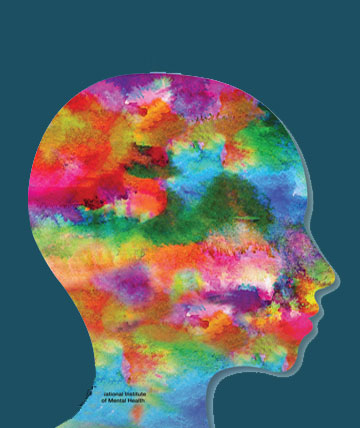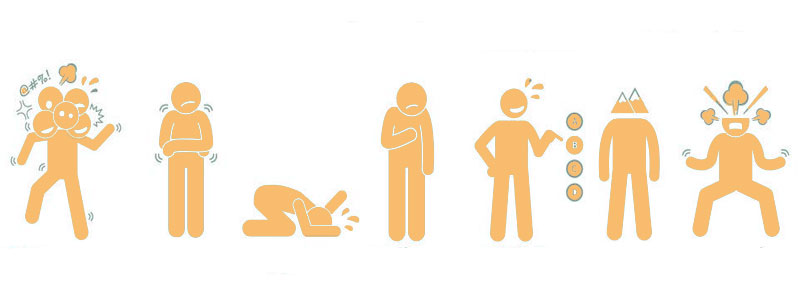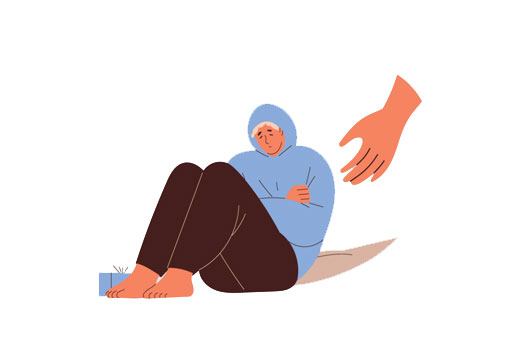
Borderline personality disorder (BPD) is a condition caused by problems in regulating one’s emotions. The concept of borderline personality disorder dates back more than 60 years. Psychologists present the psychological characteristics of these patients as borderline personality organization, which is the middle of neurotic personality disorder and psychosis, which is more severe than the former and milder than the latter. The fact that the above disorder is placed between neurotic and psychotic disorders caused it to be “borderline”. The structure of borderline personality disorder with unstable self-perception (deficiency in identity), use of immature and primitive defense mechanisms (categorization of others into completely good or completely bad groups and defense mechanisms of denial, projection, acting out) and temporary interruptions It is defined in the ability to distinguish reality from imagination (flaws in reality testing).
The main features of this disorder have been identified as mental and emotional dissatisfaction, impulsive actions, unstable interpersonal relationships, pseudo-psychotic thoughts and social incompatibility. After that, several studies were done to clarify these definitions so that they can be used to identify patients with BPD and separate them from people with other types of psychological disorders.
The basic features of BPD present a pervasive pattern of instability and significant impulsivity in interpersonal relationships, lack of clarity of self-image, and emotions (moods and emotions). Like all types of personality disorders, these problems usually begin in late adolescence or early adulthood and are revealed in various contexts and situations of life. Borderline personality disorder shows a pattern of impulsivity and instability in interpersonal relationships in general.
Criteria for the diagnosis of borderline personality disorder
The first diagnostic criterion indicates the emotional efforts of a person with borderline personality disorder. He wants to prevent himself from feeling rejected, real or imagined, by someone he cares about. The idea of early separation from a person who is important has a negative impact of instability on the mood, self-perception, thought patterns and behavior of the affected person. A person with BPD often perceives even the most reasonable separations as rejection and takes them as a sign that the person is bad. The second criterion of diagnosis expresses the pattern of unstable and intensified relationships.
People with BPD often experience intense emotional conflict after even brief encounters with those they care for or love. Also, they think the abilities and characteristics of these people are ideal in their opinion, and if that person disappoints them, they quickly change their opinion about him and think of him as a person whose care or attention was not enough.

Such a drastic change often happens in response to the feeling of rejection or rejection.
The third criterion refers to identity confusion. A person with BPD may experience severe changes in their self-image, which manifests as changes in goals, values, ideals, friends, and gender identity. Patients with BPD in some cases, especially in situations where they feel that others have not supported them as they should, often feel bad or evil and even in some cases they feel as if they do not exist at all.
The fourth criterion describes the impulse to self-harm. People with BPD often abuse drugs and have unhealthy sexual relationships, drink excessively, gamble and spend, and drive recklessly. These patients make threats or suicidal impulses and may cut their body with a razor or burn it with a cigarette.
These behaviors often occur in cases of separation of attention or in situations where they think that more responsibility is expected from them than usual.
The fifth criterion describes these behaviors: They may experience depression, anger, anxiety, irritability, panic or despair. This usually occurs in response to interpersonal tensions and often lasts only a few hours. This emotional instability is described in the sixth criterion. Criterion 7 describes the chronic feeling of emptiness and boredom experienced by a person with PBD.
Criterion 8 describes intense and inappropriate anger. It is often expressed against people who think they neglected him or left him and did not take care of him.
A person with BPD may temporarily become pessimistic and skeptical or have a psychotic breakdown under severe stress. so that he feels separated from his thoughts or body.
Clinical features of borderline personality disorder
A patient with borderline personality disorder almost always appears to be in crisis, and rapid mood swings can be seen in these individuals. One moment depressed and another complaining moment, an emotional moment and another moment without any emotion. The psychotic symptoms of patients with borderline personality disorder are almost always limited, transitory, superficial and suspicious. The behavior of patients is very unpredictable, and for this reason, they almost never achieve the amount of performance that is in their ability and talent.
Suicidal behavior to get the attention of family, lover and therapist, repeated self-harm to get help from others, expression of passive anger, shows the painfulness of their life. They may have repeatedly experienced the forms of self-harm. The risk of suicide is very high in people with borderline personality disorder who are weak in terms of social adjustment and have poor problem-solving ability.
Because these people experience the feeling of dependence and hostility at the same time and their interpersonal relationships are chaotic and messy, they may feel close to someone and on the other hand, feel a lot of hostility and anger towards their close friends. People with borderline personality disorder cannot stand being alone and frantically seek relationships and make frantic efforts to avoid rejection. To relieve their loneliness, they become friends with strangers or engage in sexual promiscuity. Ambiguity in identity is one of the other characteristics of these people. Identity confusion and inability to understand oneself.

They are often confused about their own identity or who they really are. They are not sure what they want from life and lack a clear understanding of themselves on a deeper level. Uncertainty about who they are and what they want from life manifests as sudden changes in life choices such as career plans, values, goals, and friends.
Another problem is the sexual orientation of these people. It is possible for these people to shift between identifying homosexual and heterosexual orientation and perhaps reach a stage where they suddenly reconsider their own gender and make efforts to change their gender. What is important to them is not the gender of their sexual partner, but the ability of the sexual partner to remain faithful to them is very important to them.
The feeling of boredom makes these people always seek stimulation and experience a high level of excitement. To relieve boredom, they engage in impulsive behaviors such as reckless and showy spending, reckless driving, extreme overeating, substance abuse, or shoplifting, and the excitement of this activity makes them lively.
Like their behavior, their mood is unstable and unpredictable. They fluctuate in extreme emotional states. One day they feel at their peak and the next day they feel depressed, anxious and irritable. They categorize all people as either absolute good or absolute bad, that is, people who are either their supporters and should be loved, or they are hateful and abusive and should be avenged. In fact, the two halves that the patient considers people to be either good and ideal or completely worthless are among the characteristics of these people.
Although many aspects of communication and interpersonal functioning of people with borderline personality disorder are chaotic and disordered, they can handle the responsibilities of their daily lives and even some of them are successful in various fields, however, in many of them, there is a conflict between There is a latent and persistent individual. The presence of these people in the lives of those who interact with them creates a lot of confusion, and unfortunately, it is a disorder that is very common among women, and the educational role of women in the family cannot be underestimated

